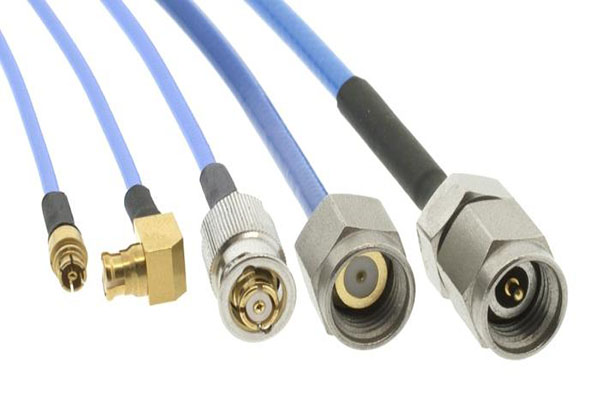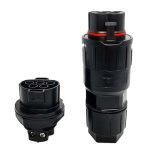As 5G networks continue to expand and evolve, the importance of GHz connectors in these applications cannot be overstated. GHz connectors are essential for ensuring reliable and high-speed data transmission in 5G networks. However, selecting and integrating the right GHz connectors can be a complex process. In this blog post, we will discuss the six key considerations to keep in mind when selecting and integrating GHz connectors into 5G applications.
Frequency Range
The frequency range of a GHz connector is an essential consideration when selecting one for a 5G application. GHz connectors are designed to operate within a specific frequency range. It is critical to choose a connector with a frequency range that matches the requirements of the 5G application. Failure to select a connector with an appropriate frequency range can result in poor signal quality and data transmission errors.
To determine the appropriate frequency range, it is essential to understand the requirements of the 5G application. For instance, different 5G applications may require different frequency ranges, depending on the type of data being transmitted. For example, if the application requires high-speed data transmission, the frequency range of the connector must be able to handle the required bandwidth.
Some examples of GHz connectors with different frequency ranges and their applications include:
- SMA connectors, which have a frequency range of up to 18 GHz and are commonly used in wireless communications and test and measurement applications.
- 2.92 mm connectors, which have a frequency range of up to 40 GHz and are used in high-frequency applications such as radar and microwave communication systems.
- 2.4 mm connectors, which have a frequency range of up to 50 GHz and are used in 5G applications and other high-speed data transmission systems.
Impedance Matching
Impedance matching is another critical consideration when selecting and integrating GHz connectors into 5G applications. Impedance matching refers to the process of ensuring that the impedance of the connector matches that of the system it is connecting to. Failure to match the impedance can lead to poor signal quality and data transmission errors.
To ensure proper impedance matching, it is crucial to use connectors with the same characteristic impedance as the system. The most common characteristic impedance for 5G applications is 50 ohms. It is also essential to pay attention to the return loss of the connector, which refers to the amount of signal reflected back to the source. A high return loss can result in poor signal quality.
Some consequences of poor impedance matching and how to avoid them include:
- Signal reflections can cause standing waves, leading to a loss of power and reduced signal quality.
- To avoid poor impedance matching, it is crucial to use connectors with the same characteristic impedance as the system and pay attention to the return loss of the connector.
Insertion Loss
Insertion loss is the amount of signal power lost as it passes through the connector. It is another critical consideration when selecting and integrating GHz connectors into 5G applications. High insertion loss can lead to poor signal quality and reduced data transmission speeds.
To minimize insertion loss, it is essential to choose connectors with low insertion loss. This can be achieved by selecting connectors with high-quality materials and minimizing the number of connectors in the system. Additionally, it is crucial to use connectors with the right length and bend radius to minimize signal loss.
Some examples of the effects of high insertion loss and how to avoid them include:
- Reduced signal quality and data transmission speeds can result from high insertion loss.
- To avoid high insertion loss, it is crucial to select connectors with low insertion loss and minimize the number of connectors in the system.
Return Loss
Return loss is another critical consideration when selecting and integrating GHz connectors into 5G applications. Return
go on the rest
loss refers to the amount of signal reflected back to the source after passing through the connector. High return loss can lead to poor signal quality and reduced data transmission speeds.
To minimize return loss, it is essential to choose connectors with low return loss. This can be achieved by selecting connectors with high-quality materials and proper design. Additionally, it is important to ensure proper impedance matching, as discussed earlier, since poor impedance matching can result in high return loss.
Some examples of the effects of high return loss and how to avoid them include:
- Reduced signal quality and data transmission speeds can result from high return loss.
- To avoid high return loss, it is crucial to select connectors with low return loss, ensure proper impedance matching, and use high-quality materials and proper design.
Environmental Conditions
Environmental conditions are another crucial consideration when selecting and integrating GHz connectors into 5G applications. The environmental conditions can have a significant impact on the performance and reliability of the connectors. Therefore, it is essential to select connectors that can withstand the specific environmental conditions of the application.
Some examples of environmental conditions that may impact the performance of GHz connectors and how to address them include:
- Temperature: Extreme temperatures can cause expansion or contraction of the connector and result in poor signal quality. To address this issue, it is essential to choose connectors with appropriate temperature ratings for the application.
- Moisture: Moisture can lead to corrosion and damage to the connector. To address this issue, it is essential to choose connectors with appropriate sealing and corrosion-resistant materials.
- Vibration: Vibrations can cause connectors to loosen and result in poor signal quality. To address this issue, it is essential to choose connectors with appropriate locking mechanisms and vibration-resistant materials.
Size and Form Factor
Size and form factor are another critical consideration when selecting and integrating GHz connectors into 5G applications. The size and form factor of the connector can impact the overall size and design of the system. Therefore, it is essential to choose connectors that can fit within the size constraints of the application and that have a compatible form factor.
Some examples of connectors with different sizes and form factors include:
- SMP connectors, which are compact and have a snap-on design, making them suitable for small devices and modules.
- Type N connectors, which have a threaded design and are commonly used in larger systems that require high-power transmission.
- Micro-coaxial connectors, which are miniature and designed for use in high-frequency applications.
Cost
Cost is another critical consideration when selecting and integrating GHz connectors into 5G applications. The cost of the connector can impact the overall cost of the system. Therefore, it is essential to choose connectors that provide the required performance at a reasonable cost.
Some factors that may impact the cost of GHz connectors include:
- Frequency range: Connectors with a higher frequency range may be more expensive.
- Materials: Connectors made of higher-quality materials may be more expensive.
- Design: Connectors with more advanced designs may be more expensive.
In conclusion
Selecting and integrating GHz connectors into 5G applications is a complex process that requires careful consideration of various factors. The six key considerations discussed in this blog post include frequency range, impedance matching, insertion loss, return loss, environmental conditions, size and form factor, and cost. By considering these factors, it is possible to choose the right connector for the 5G application, ensuring reliable and high-speed data transmission.




